Operators, Transform and Roll Out! Repurposing Commercial and Municipal Equipment for Disaster Response
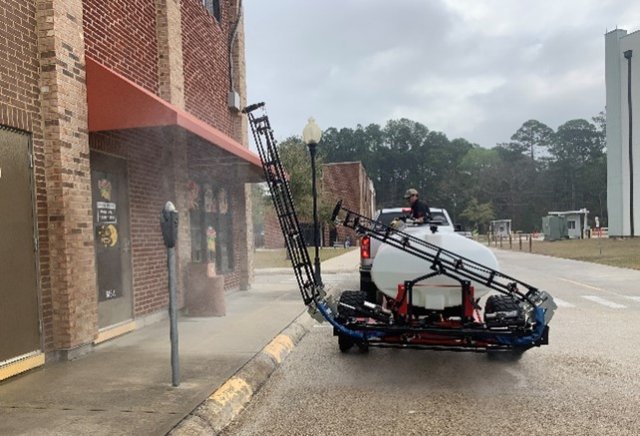
Published May 24, 2022
Emergency responders have to think outside the box to solve serious problems, sometimes with few resources. During a large-scale disaster, it can be costly and sometimes impossible to rely on specialized equipment or highly trained individuals to operate the technology , especially if many different localities are vying for similar supplies. During the pandemic, states and localities struggled to maintain critical supplies of masks, respirators and other life-sustaining equipment. This gap in resources quickly sparked the ingenuity of researchers, manufacturers, and the general public. Students in universities were coming up with new ways to build ventilators at a low-cost, while many of those stuck at home with a hand for sewing were making batches of face coverings to give out to friends and family.
Now, how can we apply what we know about supply shortages during a large-scale disasters to potential future incidents? This is precisely what EPA has been thinking about as part of the Analysis for Coastal Operational Resiliency (AnCOR) project, a collaboration between U.S. EPA, the U.S. Coast Guard, and the U.S. Department of Homeland Security (DHS) Science and Technology Directorate. This project is focused on developing and demonstrating capabilities and strategic guidelines to prepare the U.S. for a wide-area release of a biological agent, including mitigating impacts to U.S. Coast Guard facilities and assets.
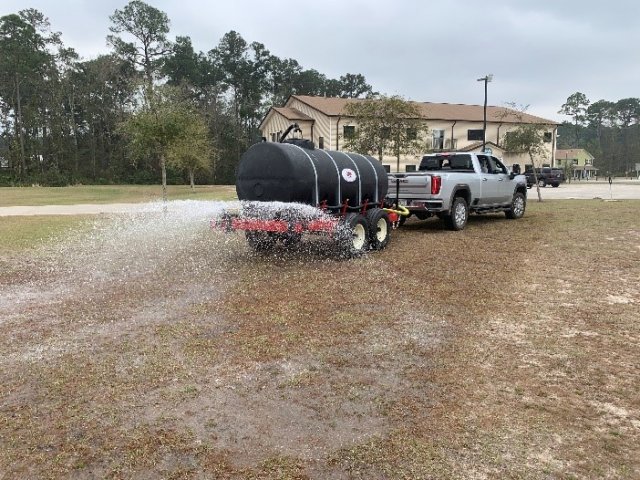
One component of this project involves identifying and evaluating commercial and municipal equipment that can rapidly be repurposed for remediation activities. What is readily available in most cities? What type of equipment exists with readily trained individuals to operate them? How effective is the equipment and what are their operational limitations? Equipment would need to be able to dispense disinfectant to infrastructure or conduct other response operation tasks at a lower cost than specialized equipment and shorten the remediation process.
In order to do this, EPA researchers conducted a market survey for commercially available equipment that could be used for all types of response and remediation activities, including sampling, decontamination, and waste management. To truly understand the operational viability of such equipment, a subset was selected for demonstration at the DHS Federal Law Enforcement Training Center (FLETC) in Brunswick, Georgia in March 2022. The FLETC facility includes a realistic replication of an urban street that can be used safely to train and simulate scenarios relevant to emergency response. Demonstrating equipment at this location provided participants with operational insight on how it could be deployed in the environment of interest for remediation activities.
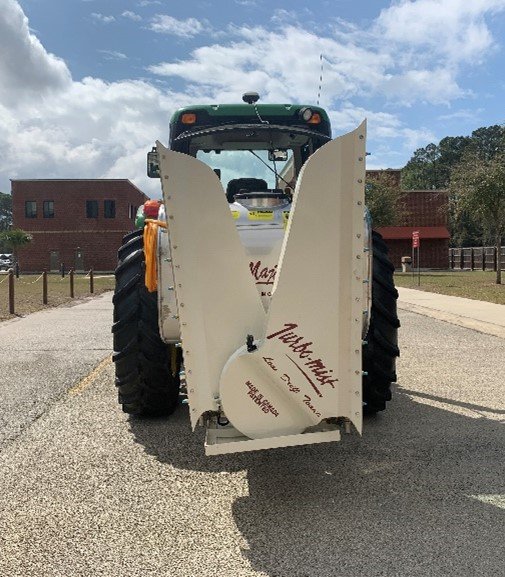
The first piece of equipment that was tested for the demonstration was a golf and turf sprayer (Photo 1), used for the maintenance of golf courses and athletic fields. It includes a 300-gallon tank with booms on each side that have a 20-foot swath. Booms can operate separately or all together by section left, center, and/or right. Additionally, they can move upward to spray vertically and move into an “X” fold.
The next commercial equipment that was demonstrated to EPA, DHS, and U.S. Coast Guard personnel was a nurse tank trailer with road sprayer (Photo 2). It contained a 1635-gallon tank that is designed to put water down on the street for dust suppression or washing. There are two rear nozzles that flare out water as well as an additional side nozzle and hand sprayer. To show some variability, the third piece of equipment included a smaller gallon atop an ATV. While more compact, this technology is still able to pack a punch when spraying down surfaces whether using the handgun sprayer or with the hose clipped to the side.
The final equipment piece demonstrated on the first day was the Turbo-Mist Low Drift Tower (Photo 3) hitched to a John Deere tractor which is often used for orchard and vineyard spraying.
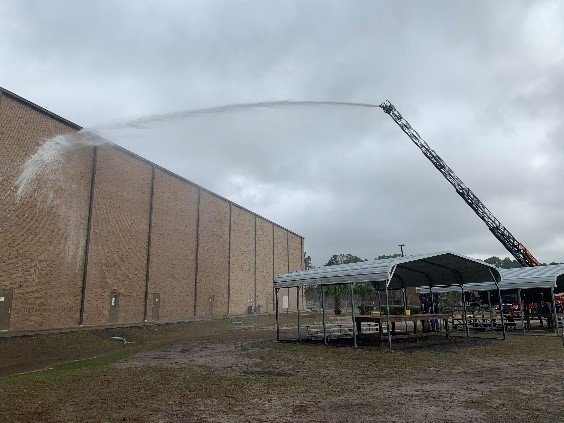
The second day of demonstration included two pieces of equipment. The first was a fire/rescue truck from the Glynn County Fire Department in Georgia (Photo 4). With a fully extended ladder, the truck pumped water off the ladder pipe onto the building to show how high and far water can be sprayed if necessary to wash-down a building. The 62,000-pound truck contains 300 gallons of water, while a fire engine can carry up to 1,000 gallons and a pumper tanker engine could have around 3,000 gallons. The engines can also use hydrants to supply unlimited quantities of water, and an eductor can facilitate the injection of chemicals into the water down-stream of the pump. Firefighter representatives for Glynn County Fire explained that technology advancement allows for spraying of more water with less pressure since there is less friction to account for than with older technology.
The last piece of equipment to be demonstrated was a Road Brine Sprayer from the Georgia Department of Transportation (GDOT) (Photo 5). Valves that control the nozzles facing the street are operated by a controller that is mounted in the cab of the truck. The nozzles are arranged to completely cover the street being sprayed below. Operators from GDOT drove down each lane to show participants the coverage this type of equipment could provide when spraying down a large area.
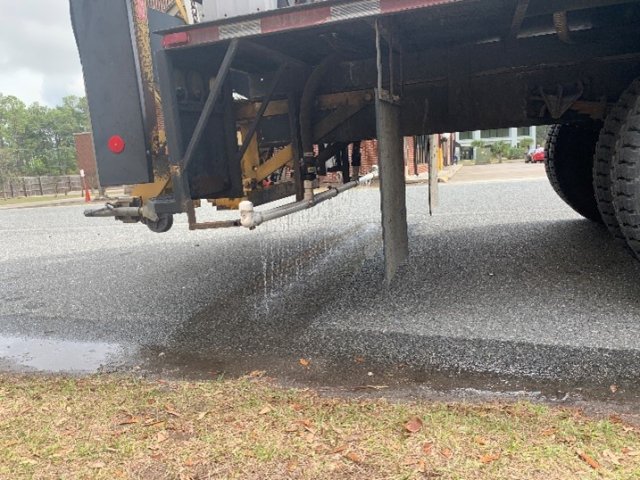
Participants were provided an opportunity to speak with the operators of the equipment to ask questions about capability and determine potential strengths and weaknesses. Being able to directly observe specific equipment, performing remediation tasks at an operationally-relevant scale, and in an environment that simulates real-world use, is a critical component of equipment prioritization. Conducting this prioritization prior to an incident is necessary to prevent response delays following a biological contamination incident. During this event, equipment was demonstrated without the use of biologicals or chemicals and was for the sole purpose of observing operational capability.
A follow-up demonstration included an evaluation of equipment at the May 2022 AnCOR Wide-Area Demonstration for decontamination effectiveness. Research results from this effort will directly assist the U.S. Coast Guard and the EPA in preparing for and responding to potential releases of a biological threat agent. In addition, new information regarding preparedness and response to such an event will assist state and local decision-makers with remediation efforts.
